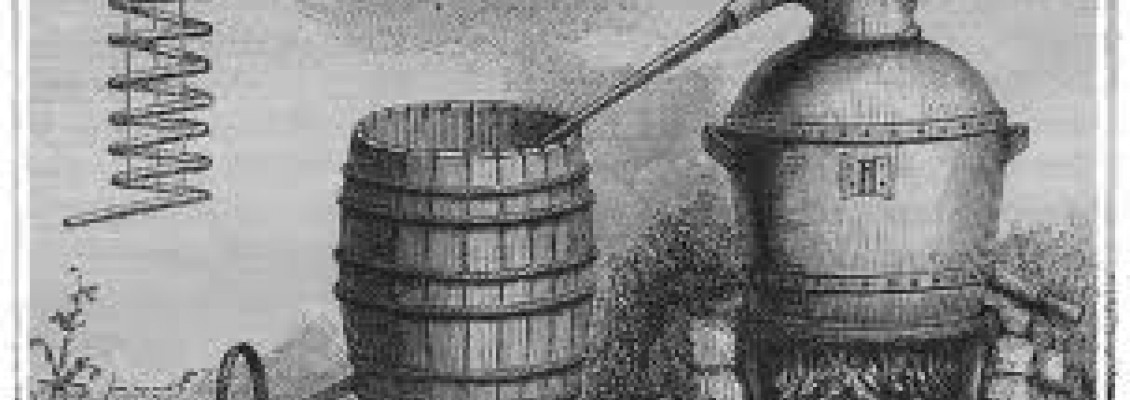With time come tsipouro...

If you ever happen to find yourself in the autumn in "kazanemata" season, you'll be overwhelmed by the aromas and the magical process of tsipouro production. The smell of hot alcohol and raw unripe and fruity aromas of grapes and fermented grape juice, mixed in a unique harmonious agreement...
The history of spirits has roots deep in the history of alcohol. The production of tsipouro and raki, however, in its current form at least, dating to somewhere between the 15th and late 16th century. They are drinks of pooras the are created from the humble residue of wine, the compressed grapes. They are products of the distillation of pomace, or tsampoyrwn, or pressed grapes, or tsikoydwn, or other local designations, which all mean the residue of grape compression from where the must is recieved. These two drinks are born from the remains including the stems, seeds and peels. Most of the time in this jumble, a nifty amount of juice is contained, which has either already been fermented when it comes to red grapes that blended with the grape, or left to knead alone when seen from white winemaking. One of the secrets of producing good spirits lurks in the proper management of raw material, having any olfactory swelling will pass through distillation in the distillate.
The distillation is not such a simple process, since it includes some very fine points, from which depends the finesse of the distillate. In the beginning there was the ambykas. Which is nothing but a big cauldron with piping leading to the container collection of the distillate. In detail, the tsiporo production process consists of the following stages: the fermented grapes are driven within the ambykas where together with a quantity of water equal to their weight are heated until they start boiling with the help of steam or naked flame. Since the vapors of alcohol is more volatile than water, a separation of these two ingredients is taking place ,up to a grade point. In parallel with the alcohol evaporation, other components of fermented juice are evaporated. Such are the aromatic substances, and substances such as methanol, which are harmful to humans. The vapors of this phase pass through pipes into a concrete sloping column that is cooled in order to condense the receiving alcoholic vapours. The role of the Distiller at this critical point is to distinguish that the desired ingredients that are distilled and take them out from the rest with the "cutting" process, i.e. the distinction of the distillate in heads, hearts and tails. During the distillation the first ingredients as well as the last (heads and tails) that evaporate, are primarily spam. The heart, which is the middle part, is the one that will give us an exquisite final product. The distillate is usually 60-70 alcoholic degrees and for it to be bottled and consumed must be diluted with water.
In each case the quality of the distillate is a result of the producer's own capability. The detail, accuracy, patience, passion and possession of his art are the characteristics that a good Distiller must have.
Tsipouro is sometimes flavored with anise, a habit that is applicable mainly in northern Greece. In recent years, many producers choose to age the fresh grape distillate in the barrels, producing aged tsipouro with very particular, andmature characters.
"If you fear thatyou will gain weight, before each meal drink 100 g.of tsipouro. Tsipouro, as our grandparents say, reduces fear»